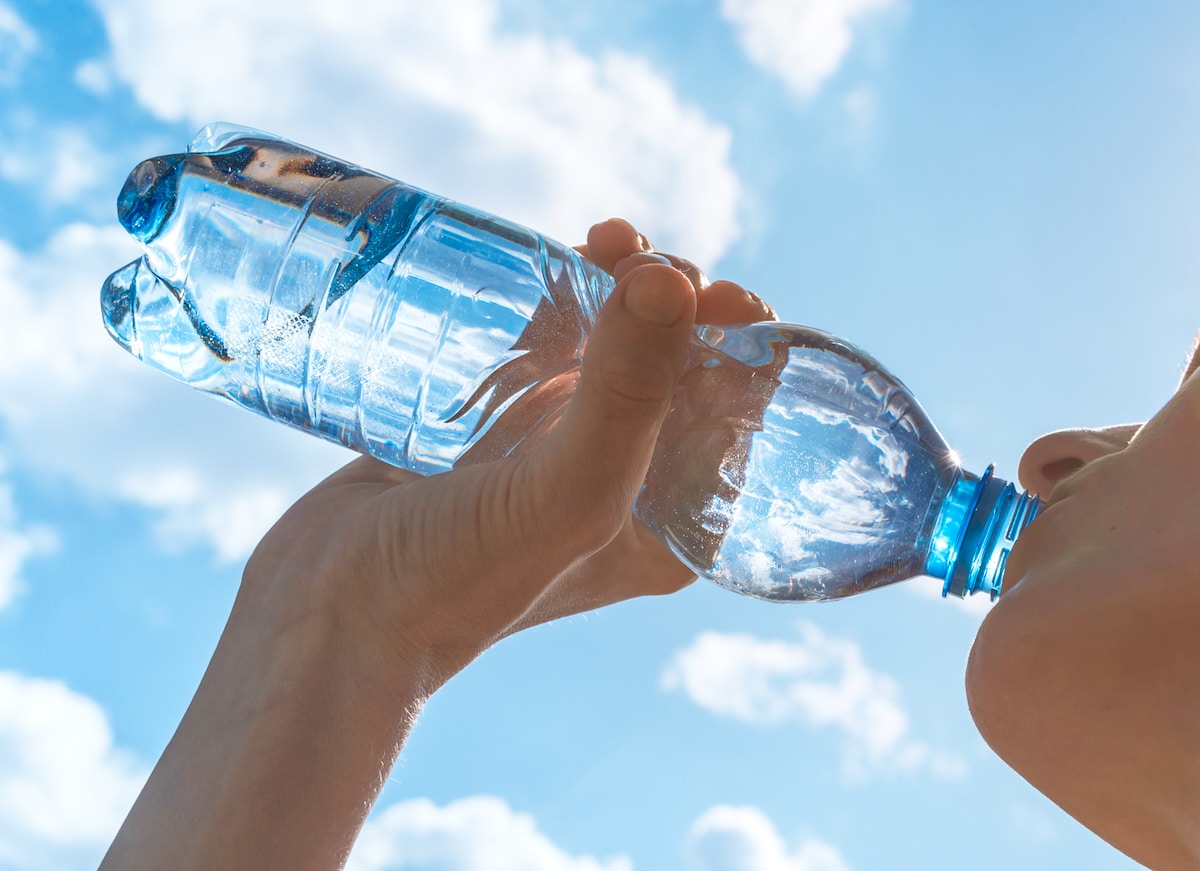Bottled Water Contains Hundreds of Thousands of Plastic Particles Small Enough to Invade Human Cells, Study Finds

 Why you can trust us
Why you can trust us
Founded in 2005 as an Ohio-based environmental newspaper, EcoWatch is a digital platform dedicated to publishing quality, science-based content on environmental issues, causes, and solutions.
Microplastics are so pervasive, they have been found all over the planet and in the human body.
A new study has found that a liter of bottled water contains an average of approximately 240,000 detectable plastic fragments, which is 10 to 100 times more than earlier estimates, a press release from Columbia Climate School said.
Plastics that begin as textiles, packaging, fishing nets and other applications break down into smaller and smaller particles that make their way into the soil, air and water, and are ingested by humans and other species. Microplastics are less than five millimeters long, while the even tinier and less-studied nanoplastics are less than a micron — one-thousandth of a millimeter in size.
“Plastics are now omnipresent in our daily lives. The existence of microplastics (1 µm to 5 mm in length) and possibly even nanoplastics (<1 μm) has recently raised health concerns. In particular, nanoplastics are believed to be more toxic since their smaller size renders them much more amenable, compared to microplastics, to enter the human body,” the researchers wrote in the study.
The research team used new technology to identify and count nanoplastics in bottled water, the press release said. The particles are so small they are able to pass directly into the bloodstream from the lungs and intestines and into organs like the heart and brain. They can also penetrate individual cells. Their effects on biological systems are not yet known, and scientists are in a hurry to figure it out.
“Previously this was just a dark area, uncharted. Toxicity studies were just guessing what’s in there,” said Beizhan Yan, co-author of the study and an environmental chemist at the Lamont-Doherty Earth Observatory at Columbia Climate School, in the press release. “This opens a window where we can look into a world that was not exposed to us before.”
The study, “Rapid single-particle chemical imaging of nanoplastics by SRS microscopy,” was published in the journal Proceedings of the National Academy of Sciences.
Global plastics production is nearly 441 tons annually, with more than 33 million tons discarded on land and in water each year, Columbia Climate School said. Plastic particles are shed from many products while they are in use. And while they may break down into increasingly smaller particles, most do not become benign, no matter how tiny they get.
“People don’t think of plastics as shedding but they do,” Sherri “Sam” Mason, Pennsylvania State University’s director of sustainability, who was not part of the study, told CNN. “In almost the same way we’re constantly shedding skin cells, plastics are constantly shedding little bits that break off, such as when you open that plastic container for your store-bought salad or a cheese that’s wrapped in plastic.”
The researchers put three popular bottled water brands sold in the United States to the test, analyzing them for plastic particles down to 100 nanometers, the press release said. They found from 110,000 to 370,000 plastic particles per liter, of which 90 percent were nanoplastics. They also pinpointed the types of plastics they were and their shapes.
Polyethylene terephthalate (PET) — the type of plastic used to make many water bottles — was a common one. The water bottles likely shed the plastics when they are exposed to heat or are squeezed by the consumer. Another recent study suggested many particles get into the water when the cap is opened or closed repeatedly.
An even more common plastic found by the research team was a type of nylon called polyamide. Yan said the substance likely came from plastic filters that are, ironically, meant to purify the water. Other common plastics discovered in bottled water were polyvinyl chloride, polystyrene and polymethyl methacrylate, which are all used in industrial processes.
The types of plastics the researchers identified only made up around 10 percent of the total nanoparticles discovered in the water, however. The rest are a mystery.
“There is a huge world of nanoplastics to be studied,” said Wei Min, one of the study’s authors and a Columbia biophysicist who co-invented the Raman scattering microscopy technique used in the study, according to the press release. Min added that, while nanoplastics have far less mass than microplastics, “it’s not size that matters. It’s the numbers, because the smaller things are, the more easily they can get inside us.”
The researchers have plans to examine tap water, which is known to contain microplastics in far fewer numbers than bottled water.
Not surprisingly, the bottled water industry discouraged the public from giving up bottled water until more is known about the effects of nanoplastics on human health, reported The Hill.
Yan and his colleagues are conducting another study on microplastics and nanoplastics in laundry wastewater and are working with British collaborators on identifying plastic particles collected from snow in western Antarctica. They are also working with experts on environmental health to measure nanoplastics in human tissues in order to study their neurologic and developmental impacts.
“It is not totally unexpected to find so much of this stuff,” said Naixin Qian, lead author of the study and a graduate student in chemistry at Columbia University, in the press release. “The idea is that the smaller things get, the more of them there are.”
Subscribe to get exclusive updates in our daily newsletter!
By signing up, you agree to the Terms of Use and Privacy Policy & to receive electronic communications from EcoWatch Media Group, which may include marketing promotions, advertisements and sponsored content.

 233k
233k  41k
41k  Subscribe
Subscribe 




